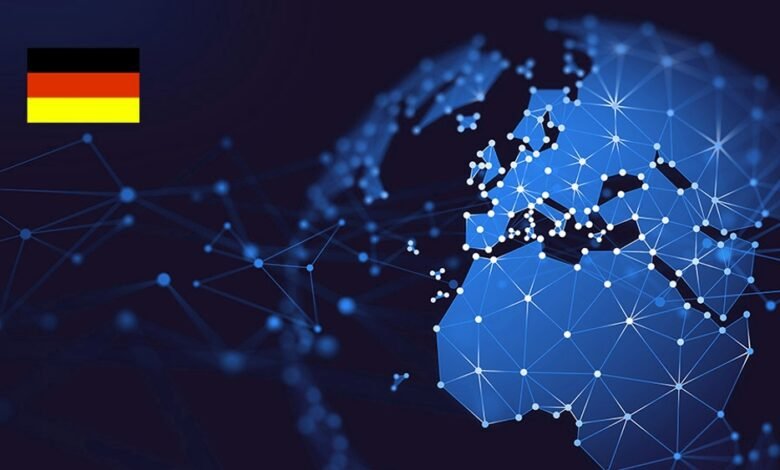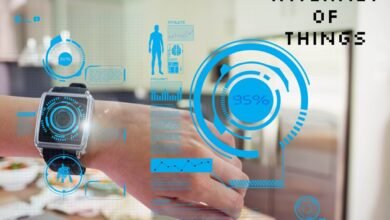Government Regulations on IoT in Germany: What Businesses Need to Know
This article delves into the key aspects of Government Regulations on IoT in Germany, providing a comprehensive guide for businesses.

The Internet of Things (IoT) is revolutionizing industries across the globe, and Germany is no exception. As one of the leading economies in Europe, Germany has embraced IoT technologies to enhance manufacturing, healthcare, transportation, and more. However, with the rapid adoption of IoT comes the need for robust government regulations to ensure security, privacy, and interoperability. For businesses operating in or entering the German market, understanding these regulations is crucial to compliance and success. This article delves into the key aspects of Government Regulations on IoT in Germany, providing a comprehensive guide for businesses.
1. Overview of IoT in Germany
Germany is at the forefront of IoT adoption, driven by its strong industrial base and commitment to innovation. The country’s “Industry 4.0” initiative, which integrates IoT into manufacturing, has positioned Germany as a global leader in smart factories and connected devices. From smart homes to autonomous vehicles, IoT applications are transforming how businesses operate and deliver value.
However, the proliferation of IoT devices also raises concerns about data security, privacy, and standardization. To address these challenges, the German government has implemented a range of regulations that businesses must adhere to. These regulations aim to protect consumers, ensure fair competition, and foster trust in IoT technologies.
2. Key Government Regulations on IoT in Germany
a. The IT Security Act 2.0 (IT-Sicherheitsgesetz 2.0)
The IT Security Act 2.0, enacted in 2021, is one of the most significant pieces of legislation governing IoT in Germany. This act strengthens cybersecurity requirements for critical infrastructure operators, including energy, healthcare, and transportation sectors. It also extends to IoT device manufacturers, requiring them to meet stringent security standards.
Under the IT Security Act 2.0, businesses must:
- Ensure that IoT devices are secure by design.
- Provide regular software updates to address vulnerabilities.
- Report cybersecurity incidents to the Federal Office for Information Security (BSI).
Non-compliance can result in hefty fines, making it essential for businesses to prioritize cybersecurity in their IoT solutions.
b. The General Data Protection Regulation (GDPR)
The GDPR, which came into effect in 2018, is a cornerstone of data protection laws in the European Union, including Germany. IoT devices often collect and process vast amounts of personal data, making GDPR compliance a top priority for businesses.
Key GDPR requirements for IoT include:
- Obtaining explicit consent from users before collecting their data.
- Implementing data minimization practices to collect only necessary information.
- Ensuring data encryption and secure storage.
- Appointing a Data Protection Officer (DPO) if required.
Failure to comply with GDPR can lead to fines of up to €20 million or 4% of global annual turnover, whichever is higher.
c. The Telecommunications and Telemedia Data Protection Act (TTDSG)
The TTDSG, introduced in 2021, complements the GDPR by addressing specific privacy concerns related to telecommunications and telemedia services. For IoT businesses, this act is particularly relevant for devices that rely on internet connectivity.
The TTDSG mandates:
- Clear and transparent privacy policies for users.
- User consent for the use of cookies and tracking technologies.
- Secure transmission of data over networks.
By adhering to the TTDSG, businesses can build trust with consumers and avoid legal pitfalls.
d. The European Cybersecurity Act
The European Cybersecurity Act establishes a framework for cybersecurity certification across the EU. While not specific to Germany, it influences national regulations and provides a unified approach to IoT security.
Key aspects of the act include:
- Certification schemes for IoT devices and services.
- Enhanced cooperation between EU member states on cybersecurity.
- Promotion of secure IoT development practices.
Businesses operating in Germany must align their IoT products with these certification requirements to access the broader European market.
3. Challenges for Businesses in Complying with IoT Regulations
While government regulations on IoT in Germany aim to create a secure and trustworthy ecosystem, they also present challenges for businesses. Some of the key hurdles include:
a. Complexity of Compliance
Navigating the myriad of regulations can be daunting, especially for small and medium-sized enterprises (SMEs). Businesses must invest in legal expertise and compliance tools to ensure they meet all requirements.
b. High Costs of Implementation
Implementing robust cybersecurity measures and data protection practices can be costly. For startups and SMEs, these expenses may strain budgets and hinder innovation.
c. Rapidly Evolving Standards
IoT technology is constantly evolving, and so are the regulations governing it. Businesses must stay updated on changes to avoid non-compliance and potential penalties.
4. Best Practices for Businesses to Comply with IoT Regulations
To successfully navigate the regulatory landscape, businesses should adopt the following best practices:
a. Conduct Regular Risk Assessments
Identify potential vulnerabilities in your IoT devices and systems through regular risk assessments. This proactive approach helps address security gaps before they can be exploited.
b. Implement Privacy by Design
Incorporate data protection measures into the design and development of IoT products. This includes encryption, anonymization, and secure data storage.
c. Stay Informed About Regulatory Updates
Monitor changes in government regulations on IoT in Germany and the EU. Joining industry associations and attending relevant conferences can help businesses stay ahead of the curve.
d. Collaborate with Regulatory Authorities
Engage with regulatory bodies like the BSI to gain insights into compliance requirements and best practices. This collaboration can also help businesses build credibility and trust.
5. The Future of IoT Regulations in Germany
As IoT technologies continue to advance, so will the regulations governing them. The German government is likely to introduce more stringent measures to address emerging challenges, such as AI-driven IoT devices and quantum computing threats.
Businesses should anticipate:
- Stricter cybersecurity certification requirements.
- Enhanced focus on ethical AI and IoT applications.
- Greater emphasis on cross-border data transfers and international cooperation.
By staying proactive and adaptable, businesses can not only comply with current regulations but also prepare for future developments.
6. Conclusion
Government regulations on IoT in Germany play a critical role in shaping the country’s digital landscape. While these regulations present challenges, they also offer opportunities for businesses to differentiate themselves through compliance and innovation. By understanding and adhering to the IT Security Act 2.0, GDPR, TTDSG, and other relevant laws, businesses can build trust with consumers, avoid legal penalties, and thrive in the competitive IoT market.
As IoT continues to evolve, staying informed and proactive will be key to navigating the regulatory environment. Businesses that prioritize security, privacy, and compliance will be well-positioned to capitalize on the immense potential of IoT in Germany and beyond.











